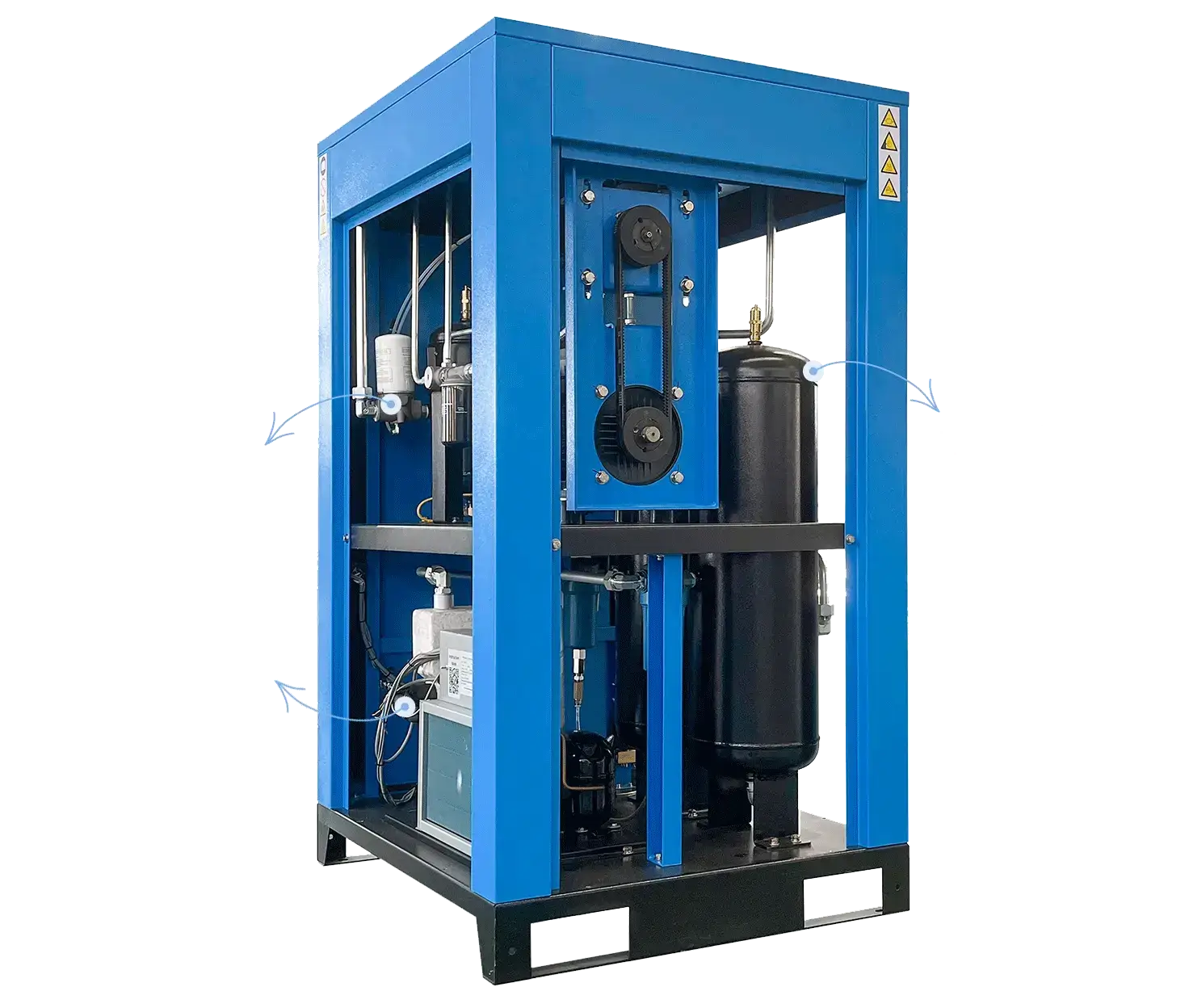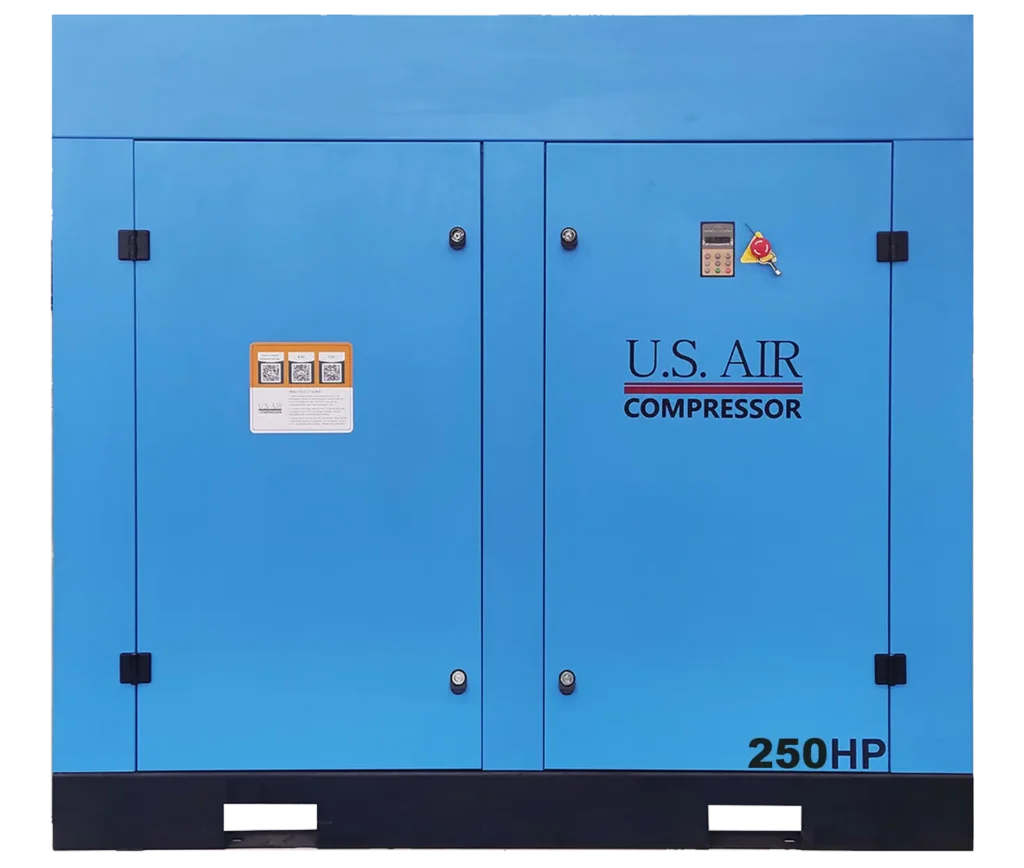Condensate Purging in Refrigerated Air Dryer Systems

Condensate purging is pivotal in refrigerated air dryer systems, as it maintains the system’s efficiency and functionality. Without adequate attention to this process, the system can face multiple complications, leading to performance issues, operational inefficiencies, and potential damage. This blog offers a comprehensive guide to understanding what condensate purging is and why it is essential in refrigerated compressed air dryer operations. By the end of this post, you will have a comprehensive understanding of condensate removal and a clear approach to optimally maintaining your system.
What Is Condensate Purging?
Condensate purging is the process of removing accumulated water and contaminants that are separated from compressed air during the refrigeration cycle in an air dryer system. Refrigerated air dryers reduce the moisture content in compressed air by cooling it down to lower dew points. Once the air cools, water vapor condenses into liquid form. Technicians must purge the condensed liquid from the system to ensure its consistent operation.
This water, or condensate, does not simply contain liquid moisture. It may include oil, particles, and other impurities present in the compressed air system. Allowing condensate to accumulate within the system can hinder its performance and pose risks to the machine’s integrity.
The condensate purging process is crucial for ensuring that technicians effectively remove any contaminants or moisture within the compressed air system, thereby safeguarding the system’s operational reliability and preventing unwanted downtime.

Why Is Condensate Purging Necessary?
Condensate purging in refrigerated air dryer systems is critical for ensuring smooth operation and longevity. Blockages can occur when condensate accumulates without proper removal, leading to increased wear and tear, corrosion, and a decline in system efficiency. Beyond hardware issues, condensate retention can contribute to compromised air quality, affecting the final output in applications where clean and dry compressed air is essential.
Technicians can ensure reduced downtime and a lower likelihood of unexpected repairs by integrating reliable condensate purging protocols into system maintenance. Purging processes address operational reliability and adherence to industry standards where air quality is integral. Neglecting condensate purging can raise operational risks and hinder compliance with stringent requirements.
Furthermore, condensate management ensures smooth drainage cycles, prevents pressure drops, maximizes machine output, and reduces the overheating risks that can arise from inadequate drainage systems. Refrigerated air dryer systems rely on effective purging for efficient operation and long-term reliability.
How Does Condensate Purging Work?
Technicians remove condensate through a built-in process within the refrigerated air dryer system that utilizes drainage solutions and electronic controls to regulate moisture expulsion. Typically, the liquid that forms after compressed air cools within the refrigerated air dryer collects in a drainage area known as a condensate trap.
Technicians can operate condensate drains manually or automatically. Manual systems require scheduled checks and user intervention to open the drain and expel moisture. However, automatic drainage systems have timed or sensor-based mechanisms. These innovations eliminate the need for human oversight by consistently detecting and removing accumulated moisture in a timely manner.
An integral element of high-functioning purging systems includes smart drain designs, such as zero-loss drains, which ensure that no compressed air is lost during water expulsion. Modern condensate purging solutions further prevent issues, such as incomplete drainage or over-purging, while optimizing system efficiency by providing reliability and accuracy.

Consequences of Poor Condensate Management
Poor or inconsistent condensate purging within refrigerated air dryer systems can lead to several operational and mechanical problems. Water and contaminants that remain in the system can disrupt efficient airflow, resulting in reduced pressure levels and overall operational inefficiency. Left unchecked, condensate build-up can also cause corrosion in pipelines or equipment fittings, shortening the lifespan of these critical components.
Additionally, excessive condensate retention can compromise the quality of air delivered to operations, particularly in industries dependent on clean, contaminant-free output. Poor management affects end-product quality, facility processes, and broader system performance within industries that rely on compressed air technology.
More serious consequences include frequent system failures and increased energy costs due to suboptimal functioning. The cost implications of downtime, repairs, and replacement components can escalate, making condensate purging a crucial task in preventing expensive complications and maintaining operational stability.
Best Practices for Condensate Purging in Refrigerated Air Dryer Systems
Adequate care and attention to condensate purging are essential for ensuring the system’s longevity and adherence to high operational standards. By implementing best practices, technicians can mitigate preventable risks and extend the performance life of refrigerated air dryer systems.
Beginning with routine inspections is a crucial first step. These checks involve monitoring the operation of the condensate drain and ensuring there is no evidence of clogging within the drainage pathways. Proactive maintenance can alert technicians to abnormalities before they compound, whether using manual or automatic purging systems.
Additionally, regular scheduling of drain test runs ensures that purging mechanisms work correctly and efficiently. Technicians should routinely test built-in sensors, particularly those in electronic drains, for accuracy to confirm the reliable removal of moisture without delay.
Lastly, system-wide efficiency upgrades, such as converting to zero-loss drainage technology, guarantee that the system securely expels condensed moisture while preserving valuable compressed air. Advanced purging technologies further reduce the likelihood of errors associated with incomplete condensate removal.
Proper condensate purging protocols prevent breakdowns, maintain air quality, and deliver trustworthy system performance that technicians can count on in any critical application.
Choosing the Right Purging Methods
Different facilities require varying condensate purging approaches based on their specific operational needs or regulatory requirements. While manual drains are suitable for infrequent use or small systems, electronic drain systems are highly recommended for facilities requiring continuous monitoring and optimized purging.
Modern automatic drainage options offer custom programmability and real-time diagnostics for high-demand environments. Sensor-driven purging enables precise action while maintaining compliance with established air quality standards. Up-to-date drainage units in refrigerated compressed air dryers reflect effective advancements in condensate expulsion methods, reassuring confidence in dealing with higher operational pressures.
Facilities must evaluate their system requirements while meticulously incorporating condensate-removal strategies tailored to the unique needs of refrigerated air dryers. Making informed drainage upgrades or replacements further aligns businesses with long-term operational integrity.
Final Thoughts on Maintaining Performance
Condensate purging in refrigerated air dryer systems is far more critical than its auxiliary role might suggest. By actively managing transportation and evacuation for condensed moisture, operations achieve measurable gains in reliability, performance, and system endurance. Recognizing that regular drainage routines preserve air quality and hardware lifespan ensures technicians focus on achieving continuous efficiency and no-compromise results.
By understanding the essentials of condensate purging in refrigerated air dryer systems, technicians can evaluate and refine their processes for optimal outcomes. Proper purging processes are not merely an operational practice but a commitment to maintaining high-functioning systems in environments where consistent output drives success.






